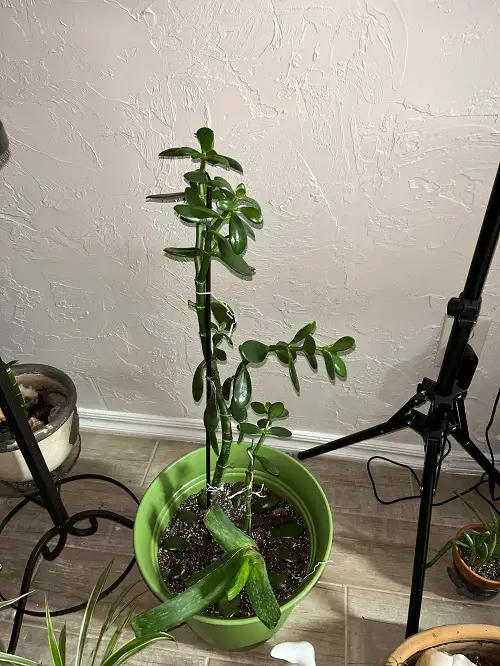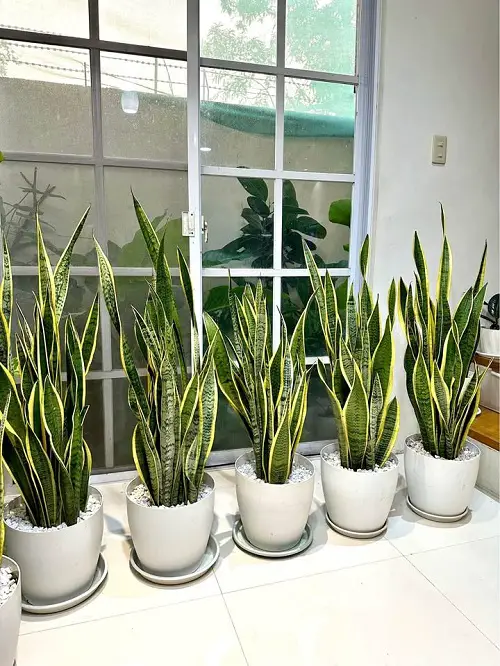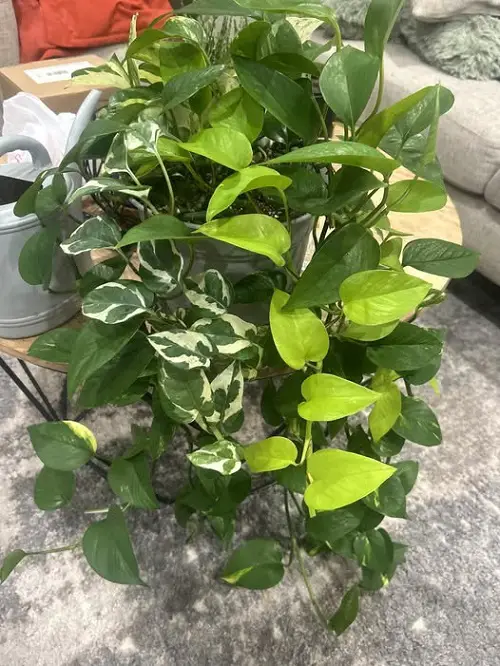Discover some of the best plants that grow well with a jade plant so you can pick your favorite companions to grow with this amazing succulent!
Give your jade plant the perfect companions that can make it look more beautiful, boost growth, and create a balanced ecosystem with the help of mutual traits. Here are the best ones that grow well with a Crassula ovata, and why each one deserves a spot by its side.
Plants that Grow Well With a Jade Plant
1. Aloe Vera

Botanical Name: Aloe barbadensis miller
Its ability to thrive in similar dry, bright conditions makes it a natural companion for the jade plant. Both these plants love well-draining soil and infrequent watering, so you won’t have to fuss over a complicated care schedule when they’re together.
Plus, the aloe apart has subtle but beneficial pest-repellent properties. Its leaves contain compounds that discourage mealybugs and aphids–two pests jade plants often struggle with.
Pro Tip: For best results, place your jade and aloe duo near a south-facing window where they can soak up plenty of indirect sunlight.
2. Echeveria

Botanical Name: Echeveria spp.
If you want to make your jade plant stand out, pair it with echeveria. These compact succulents come in rosette shapes and stunning colors like blue, pink, and deep purple, which beautifully contrast with your jade. The visual texture alone is enough to make them a favorite companion.
Beyond aesthetics, echeverias thrive on the same low-water, high-light routine as jade. Echeverias are also known to attract beneficial insects like hoverflies when they flower. These insects prey on aphids, which gives a boost to jade’s pest resistance.
3. Sedum

Botanical Name: Sedum spp.
Jade plant and sedum create a lively, full-of-personality miniature succulent landscape. Sedum shares jade’s need for sun and drought tolerance, and its growth habit helps by acting as a living mulch.
What’s unique is sedum’s additional role in pollinator support. Its flowers attract bees and butterflies that help keep your garden ecosystem in balance. Just use a shallow container with gritty, fast-draining soil to keep both sedum and jade thriving.
4. Snake Plant

Botanical Name: Sansevieria trifasciata
At first glance, the snake plant might seem too tall and structured for jade, but these two form a surprisingly balanced pair. Snake plants are vertical growers while jade spreads outwards, which creates a tiered look when you plant them together in one container or garden bed.
Tip: Instead of the usual jade plant, you can grow Senecio jacobsenii with them or display them separately.
Both of these plants are drought-tolerant and prefer to be ignored, which makes them ideal if you are a busy gardener. Snake plant is an excellent ally because it can filter airborne toxins, so it won’t sit ideally even as a companion plant.
5. String of Pearls

Botanical Name: Senecio rowleyanus
This cascading succulent will add motion and softness to the jade’s upright form. The combo will also help you create a stylish pairing that looks great on shelves or hanging baskets.
String of pearls is a slow grower like jade, so neither will outpace the other, and their growth habits ensure minimal root competition. Although it is not a full-blown repellent, its saponins can discourage chewing insects, which could save your jade from potential leaf damage. You can even grow it in water!
6. Pothos

Botanical Name: Epipremnum aureum
If you want a trailing, easy-care partner for your jade plant, pothos is a strong contender. Its heart-shaped leaves gracefully spill from shelves or hanging planters while adding volume to spaces.
Pothos and jade both do well in bright, indirect light and tolerate some degree of neglect, which gives you another reason to pair them. However, pothos can survive in slightly lower light and slightly moister soil.
This difference actually works in favor when grown nearby as the pothos slightly increases local humidity levels, which can help balance the microclimate for the jade plant.
Note: Do not plant them in the same pot! Pothos and jade have conflicting water and soil needs. Pothos likes moisture, and jade needs dry, well-drained soil, so planting them together can harm one or both.
7. Agave
Botanical Name: Agave
Agave is like the bold protector in the succulent family with its large, architectural shape and heat or drought tolerance. While its mature size may limit it to larger containers or outdoor beds, pairing it thoughtfully will add a dramatic backdrop to the jade plant’s rounded form.
Both of these plants dislike wet feet, so they need almost the same watering. Agave’s slow growth helps it conserve soil nutrients, which benefits nearby slow-growers like jade by reducing competition.
Doesn’t matter if you’re going for an indoor arrangement or a pretty succulent corner; these combinations will look stunning!



